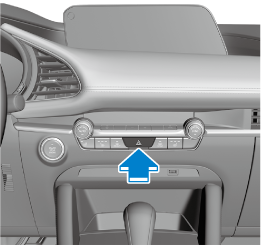Seat Warmer/Heated Steering Wheel
Seat Belt Systems
Seat Belt Warning Systems
Seat Belt Pretensioner and Load Limiting Systems
Seat Belt Extender
Child-Restraint System Installation
Advanced Keyless Entry System
Doors and Locks
Fuel and Emission
Mirrors
Windows
Security System
Driving Tips
Saving Fuel and Protection of the Environment
Hazardous Driving
Floor Mat
Rocking the Vehicle
Winter Driving
Driving In Flooded Area
Overloading
Driving on Uneven Road
Turbocharger Information (SKYACTIV-G 2.5T)
Starting the Engine
i-stop (Some Models)
Manual Transmission Operation
Automatic Transmission
Shift-Lock System
Transmission Ranges
Manual Shift Mode
Driving Tips
Switches and Controls
Rear Window Wiper and Washer (Some Models)
Hazard Warning Flasher
HomeLink Wireless Control System (Some Models)
ABS/TCS/DSC
Drive Selection
i-ACTIV AWD
Power Steering
i-ACTIVSENSE
High Beam Control System (HBC) (Some Models)
Front Radar Sensor (Some Models)
Front Side Radar Sensor (Some Models)
Rear Side Radar Sensor (Some Models)
Rear/Rear Corner Ultrasonic Sensor (Some Models)
Front Camera/Side Cameras/Rear Camera (Some Models)
Driver Monitoring Camera (Some Models)
Tire Pressure Monitoring System (TPMS)
Rear View Monitor
Parking Sensor System
Mazda Connect
Interior Equipment
Scheduled Maintenance
Owner Maintenance
Hood
Engine Compartment Overview
Engine Oil
Engine Coolant
Brake/Clutch Fluid
Washer Fluid
Body Lubrication
Wiper Blades
Key Battery Replacement
Tires
Fuses
Flat Tire
Battery Runs Out
Emergency Starting
Overheating
Emergency Towing
Warning/Indicator Lights and Warning Sounds
Warning Sound is Activated
Active Driving Display Does Not Operate
Windshield Wipers Operate at High Speed
Customer Assistance (Mexico)
Reporting Safety Defects
Warranty
Outside the United States/Canada
Registering Your Vehicle in A Foreign Country (Except United States and Canada)
Event Data Recorder
Recording of Vehicle Data
Uniform Tire Quality Grading System (UTQGS)
Tire Information (U.S.A.)
Location of the Tire Label (Placard)
Steps for Determining the Correct Load Limit


The hazard warning lights should always be used when you stop on or near a roadway in an emergency.

The hazard warning lights warn other drivers that your vehicle is a traffic hazard and that they must take extreme caution when near it.

Depress the hazard warning flasher and all the turn signals will flash. The hazard warning indicator lights in the instrument cluster flash simultaneously.
The turn signals do not work when the hazard warning lights are on.
Check local regulations about the use of hazard warning lights while the vehicle is being towed to verify that it is not in violation of the law.

Page top